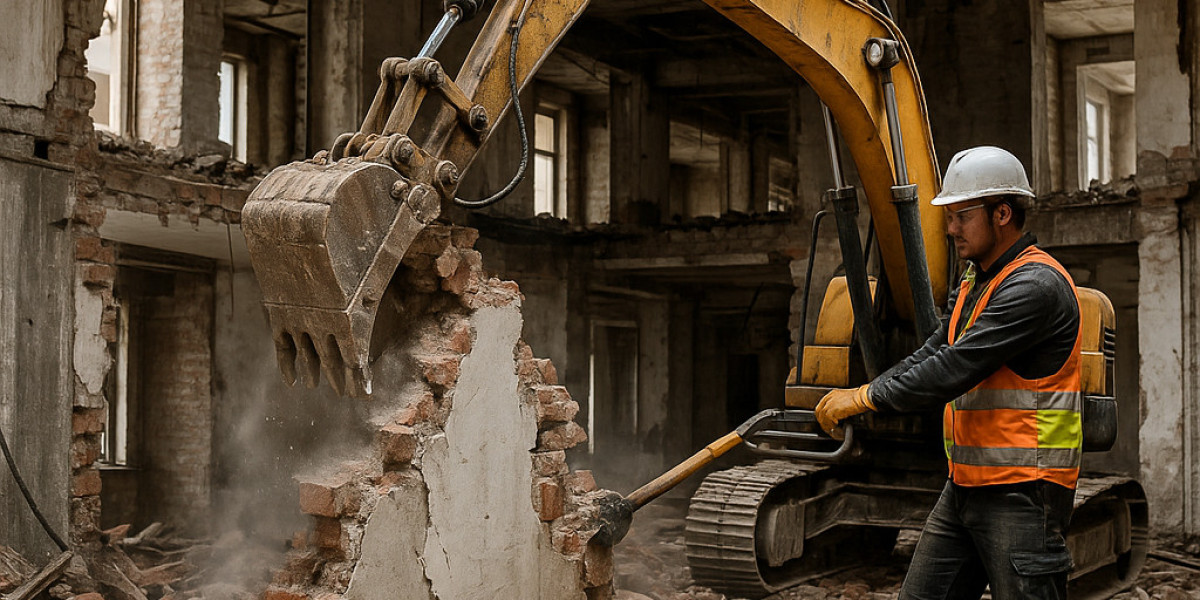Internal demolition, often referred to as interior demolition or soft demolition, is a crucial process in construction, renovation, and remodeling projects. Unlike total demolition that involves tearing down an entire structure, internal demolition focuses on dismantling specific interior elements of a building while preserving the outer shell and structural integrity. This process allows for safe, efficient renovation or repurposing of existing spaces, and is a fundamental step in adaptive reuse projects, commercial fit-outs, and residential renovations.
What Is Internal Demolition?
Internal demolition is the systematic removal of non-structural elements inside a building. These elements can include:
Partition walls (non-load-bearing)
Ceilings and ceiling tiles
Flooring materials (tiles, carpet, wood, vinyl)
Fixtures and fittings
Cabinets and built-ins
Mechanical, electrical, and plumbing (MEP) components
Insulation and drywall
Windows and doors (in some cases)
This type of demolition is typically performed in occupied or structurally intact buildings to prepare the interior space for reconfiguration, redesign, or a complete refurbishment.
When Is Internal Demolition Needed?
Internal demolition is a go-to solution in various scenarios, such as:
1. Renovation Projects
Before upgrading or remodeling interiors, internal demolition clears out outdated or damaged features to make way for new materials, layouts, or designs.
2. Commercial Space Reconfiguration
Office buildings, retail stores, and industrial units often undergo reconfigurations due to changes in tenancy or operational needs. Internal demolition facilitates these transitions smoothly.
3. Change of Use Conversions
Converting a warehouse into residential lofts or a school into office space requires gutting the interiors while preserving the main structure.
4. Asbestos or Mold Remediation
In cases of hazardous materials, such as asbestos or black mold, internal demolition allows for thorough removal and environmental cleanup.
Key Steps in the Internal Demolition Process
Site Assessment and Planning
Evaluate the building layout and materials
Identify structural and non-structural components
Develop a plan prioritizing safety, efficiency, and environmental compliance
Obtaining Permits
Internal demolition may require permits depending on local regulations and the scope of work, especially when removing plumbing or electrical systems.
Hazard Identification and Abatement
Detect and safely remove hazardous materials like asbestos, lead-based paint, or mold before starting demolition.
Disconnection of Services
Securely disconnect water, electricity, gas, and HVAC systems to avoid accidents and ensure a safe work environment.
Protection of Structural Elements
Ensure beams, columns, load-bearing walls, and other structural features remain untouched unless specified.
Demolition Execution
Use hand tools and machinery (e.g., saws, jackhammers) to methodically dismantle interiors.
Maintain dust control and proper debris management practices.
Waste Removal and Recycling
Segregate and dispose of materials responsibly.
Recycle materials such as metal, concrete, wood, and fixtures when possible.
Final Cleanup and Inspection
Remove all waste and dust from the site.
Conduct inspections to verify readiness for the next phase of construction or renovation.
Equipment and Tools Used in Internal Demolition
Pry bars and crowbars
Reciprocating saws and circular saws
Jackhammers and drills
Sledgehammers
Wheelbarrows and dumpsters
Dust control equipment (HEPA vacuums, plastic sheeting)
Personal protective equipment (PPE) including gloves, masks, goggles, and hard hats
Safety Considerations in Interior Demolition
Safety is paramount in internal demolition due to confined working spaces, debris, and potential exposure to hazardous materials. Key safety measures include:
Conducting a site-specific safety risk assessment
Ensuring worker training and PPE use
Installing barriers and signage to restrict access
Monitoring for air quality and noise
Regular tool and machinery checks
Having emergency protocols in place
Benefits of Internal Demolition
Cost-Efficiency: Reduces the need for complete rebuilds by preserving the structure.
Flexibility: Allows customization and reconfiguration of interiors.
Environmental Responsibility: Supports recycling and reuse, minimizing landfill waste.
Shorter Timelines: Typically faster than full demolition, especially for minor renovations.
Minimal Disruption: Can often be performed while other parts of the building remain operational.
Challenges in Internal Demolition
While it offers many advantages, internal demolition can present challenges:
Hidden Hazards: Undisclosed asbestos, mold, or outdated wiring
Structural Risks: Accidental damage to load-bearing elements
Noise and Dust: Particularly problematic in occupied buildings
Logistical Constraints: Limited access and working space
Permit Complexity: Navigating local codes and compliance issues
Working with experienced demolition contractors helps mitigate these risks and ensures a smooth process.
Choosing the Right Contractor
Selecting a qualified internal demolition contractor is essential. Look for:
Proven experience in similar projects
Proper licensing and insurance
Knowledge of local regulations
Safety record and training programs
Transparent pricing and timelines
Waste management and recycling practices
Conclusion
Internal demolition is more than just tearing things down — it's a strategic process that lays the groundwork for transformation. Whether for commercial upgrades, residential remodeling, or adaptive reuse, it requires precision, planning, and professionalism. Done right, it creates a clean, safe, and efficient starting point for the next stage of construction, helping turn vision into reality.



